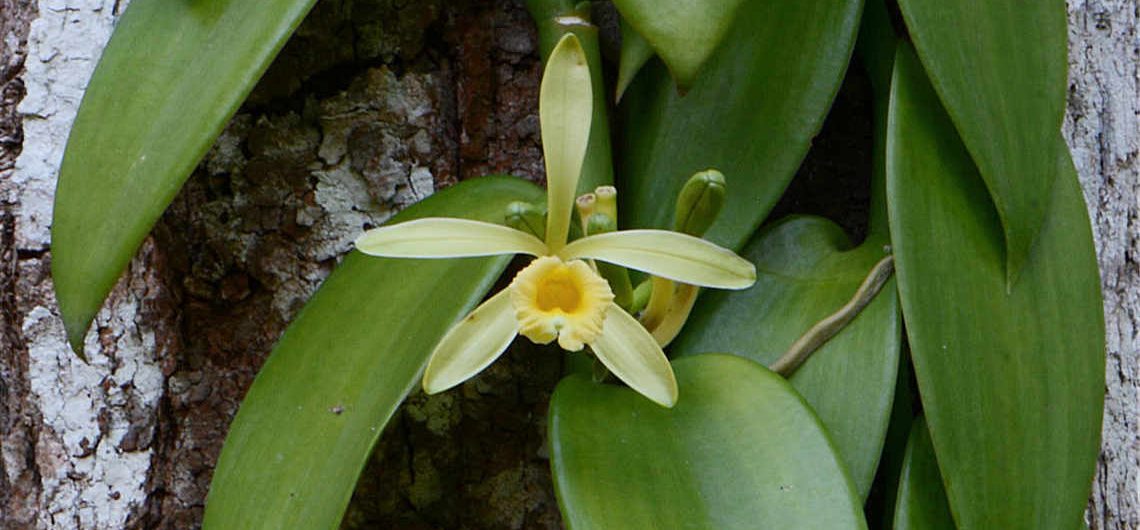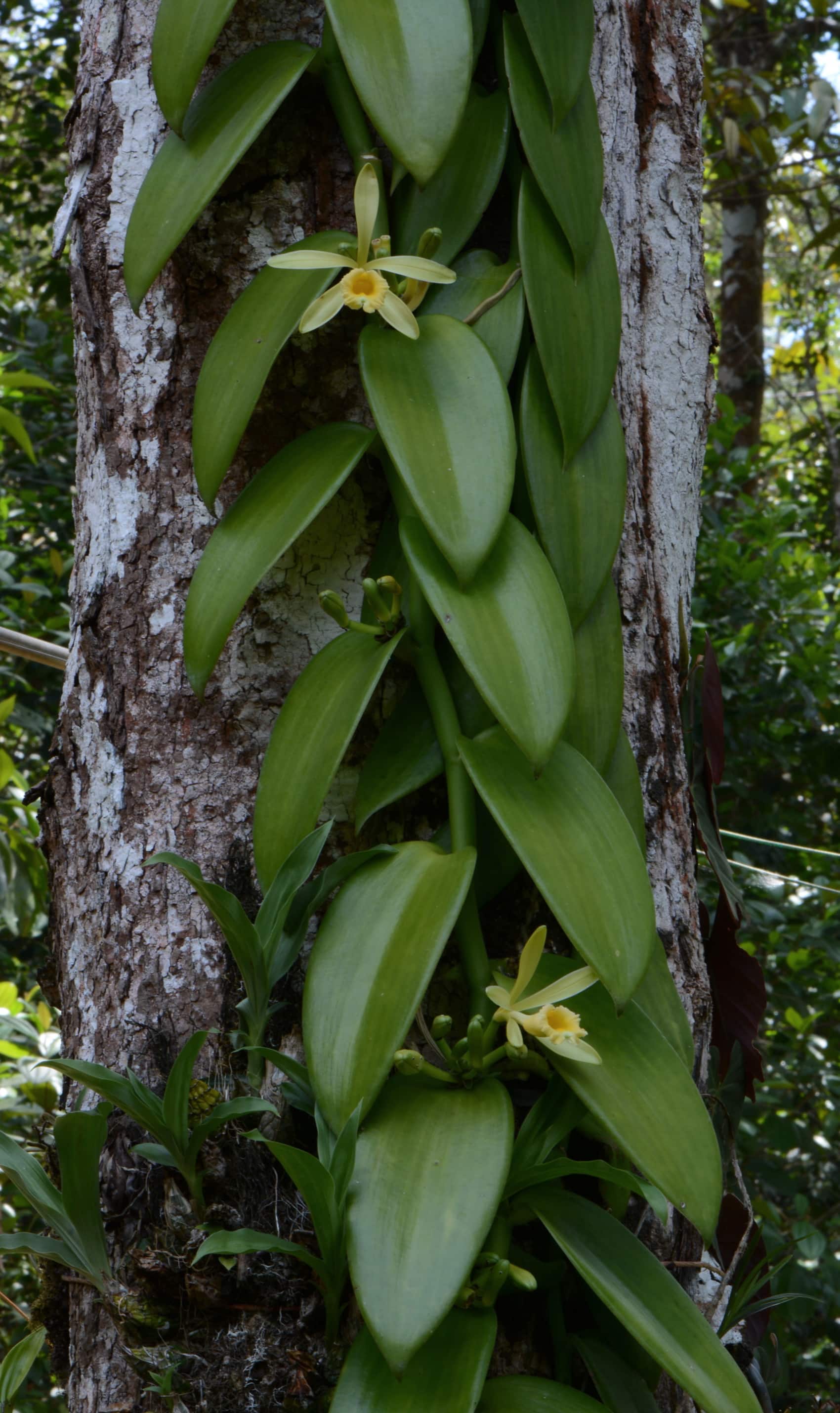Vanilla Orchid
Vanilla spp.
Well-known and very popular for its sweet aroma and flavoring, the Vanilla Orchid is the source of our commercial vanilla extract and perfumes used very commonly in our daily lives. The genus Vanilla consists of 110 species of orchids found throughout tropical regions globally. Two species, V. planifolia and V. pompona, are used commercially, the former on an industrial scale for food and cosmetics. Both species are native to Mexico and Central America. Vanilla is a vine-like plant that grows vertically along tree trunks and has aerial roots for attachment as it climbs. Long, thin stems grown up to 35 meters in length, and large, oblong, thick leaves with a leathery texture extend alternately from the stem. Flowers grow from the leaf axils, and are large and attractive, usually white and cream colors with green and yellow tints. Flowers are short-lived; matured flowers bloom in the morning and close in the afternoon, giving a sweet scent and opening only once per flower. We are familiar with the term “vanilla bean”; however, it is not a true bean, rather the fruit of the plant—a pod 10-20 cm long that ripens gradually over 5-9 months. It turns black when ripe and has a strong aroma; it contains thousands of tiny seeds, and both the seeds and pods are used to create vanilla flavoring. The word “vanilla” translates as “little pod” in Spanish. Vanilla plantations require trees for the vines to climb, thus providing open forest habitat for wildlife as well.
Pollination: Flowers are self-fertile but require pollination, achieved by the aid of stingless bees and hummingbirds. Commercially, vanilla is hand-pollinated. Read an interesting article about the discovery of hand pollination here.


